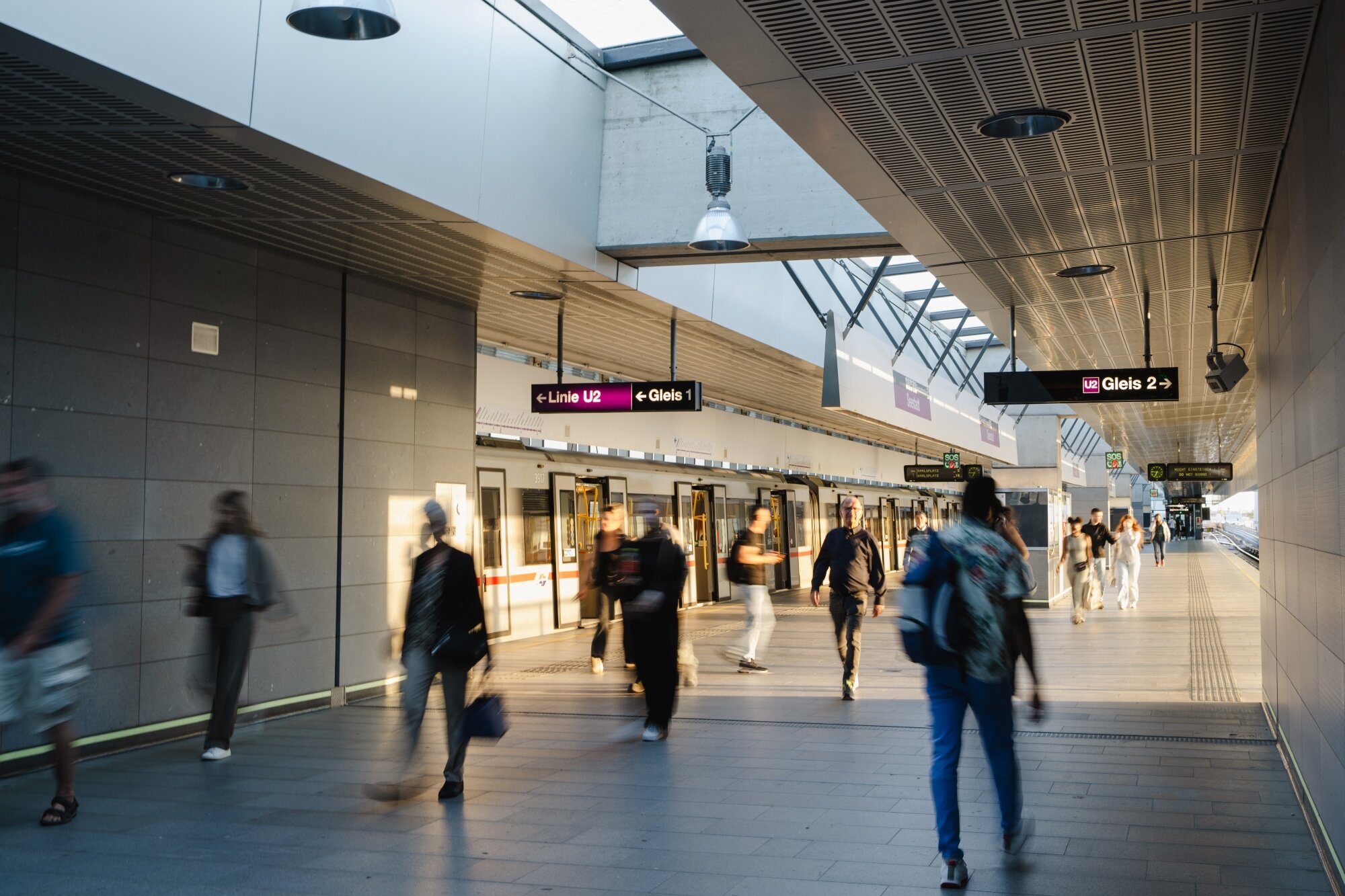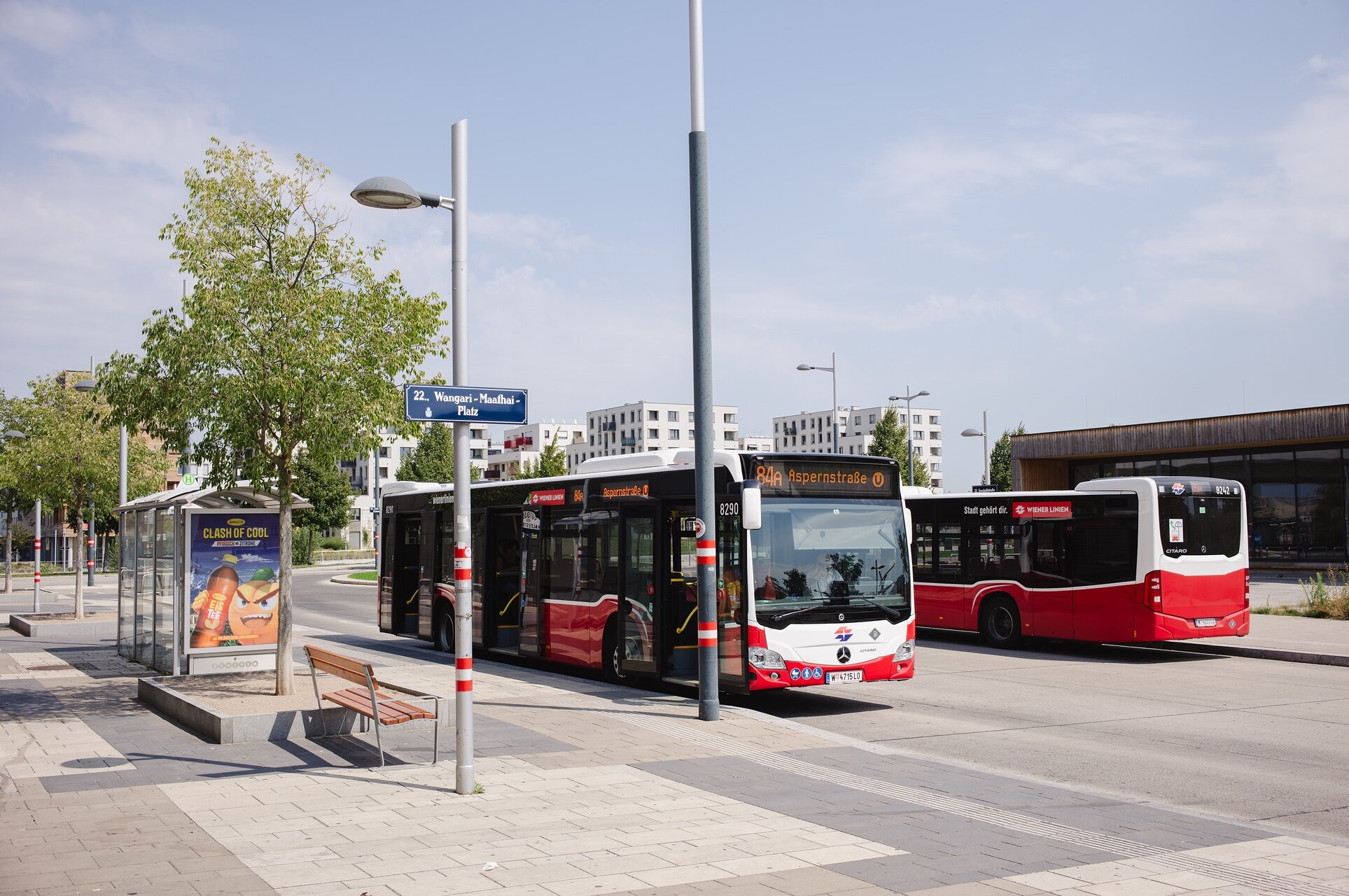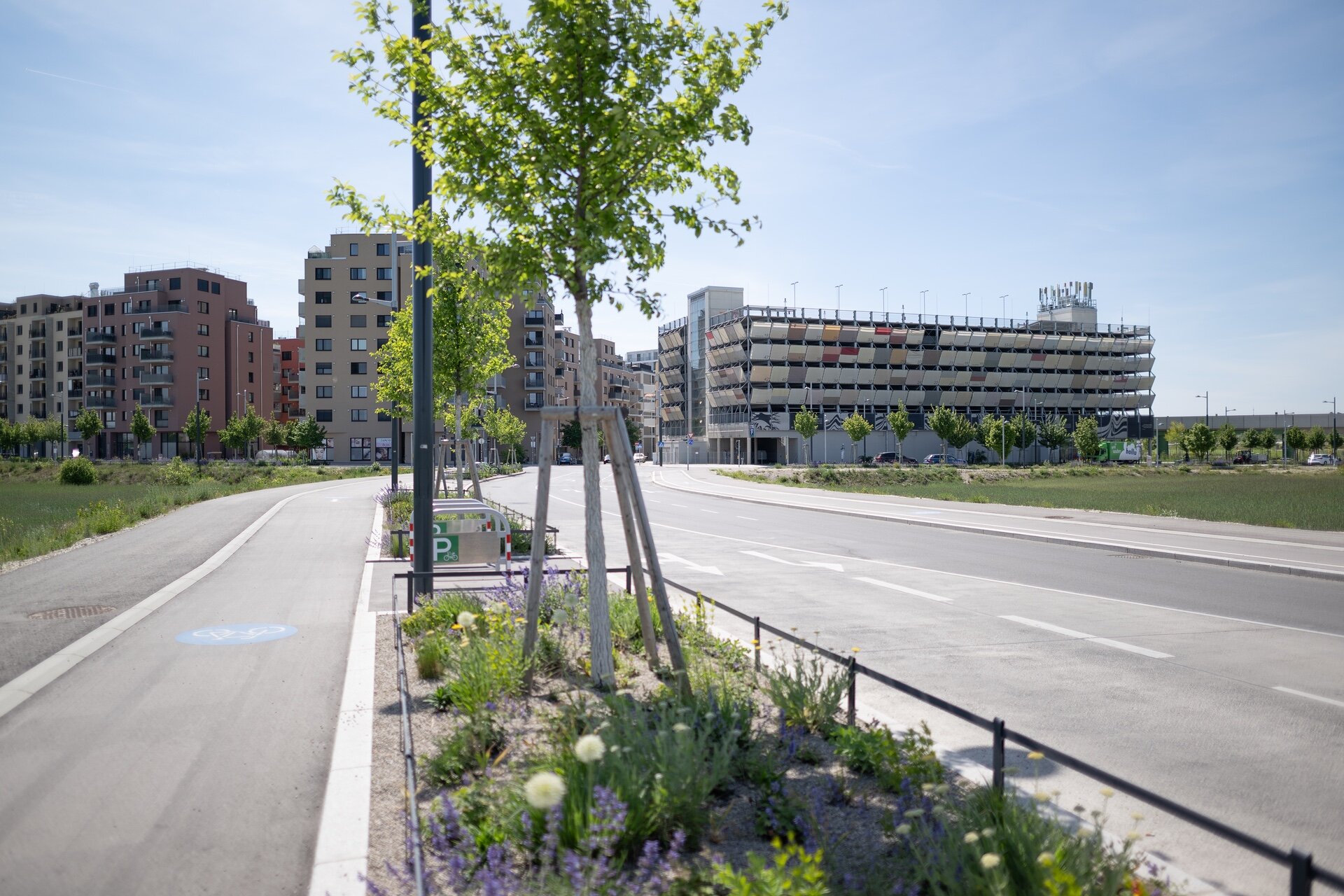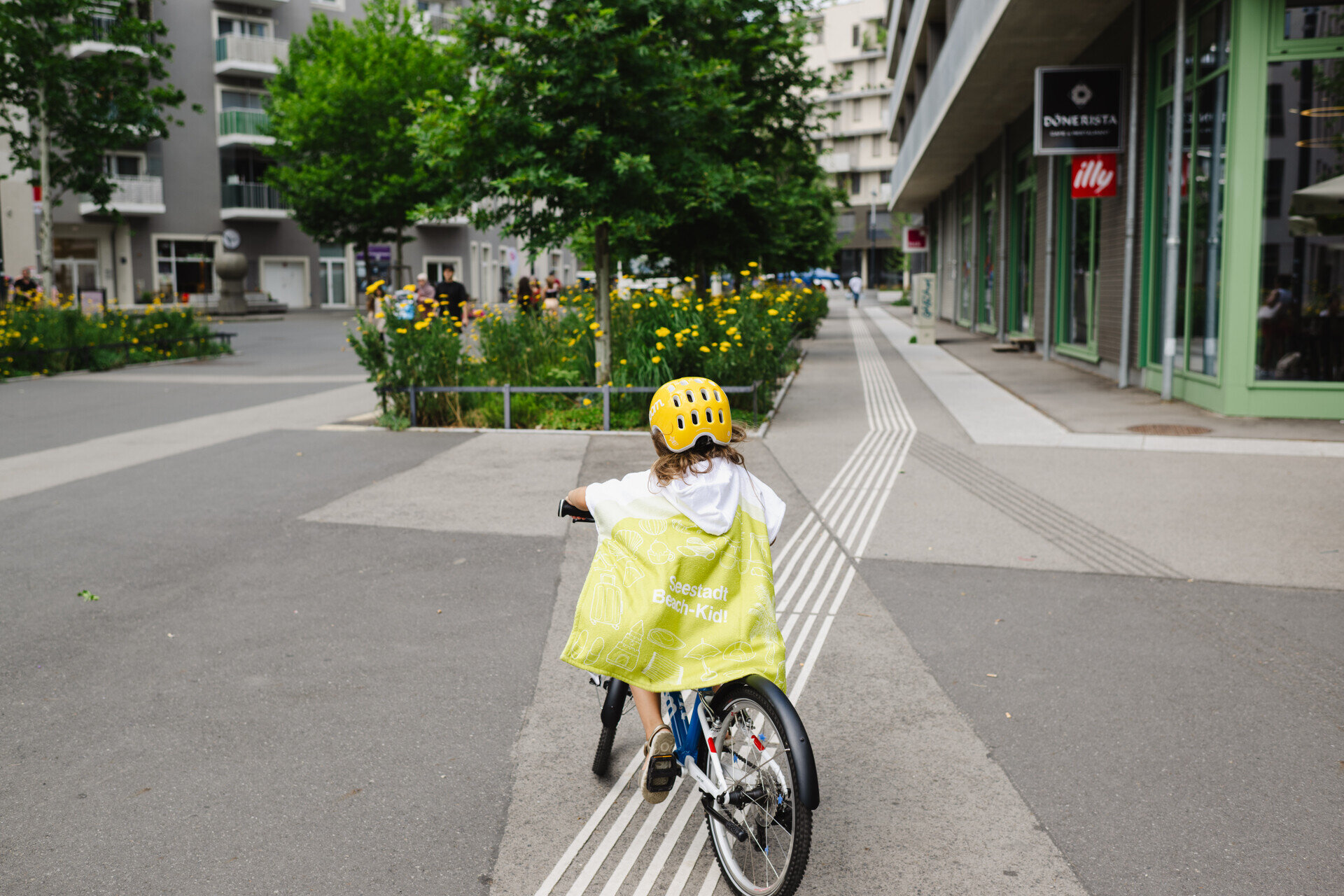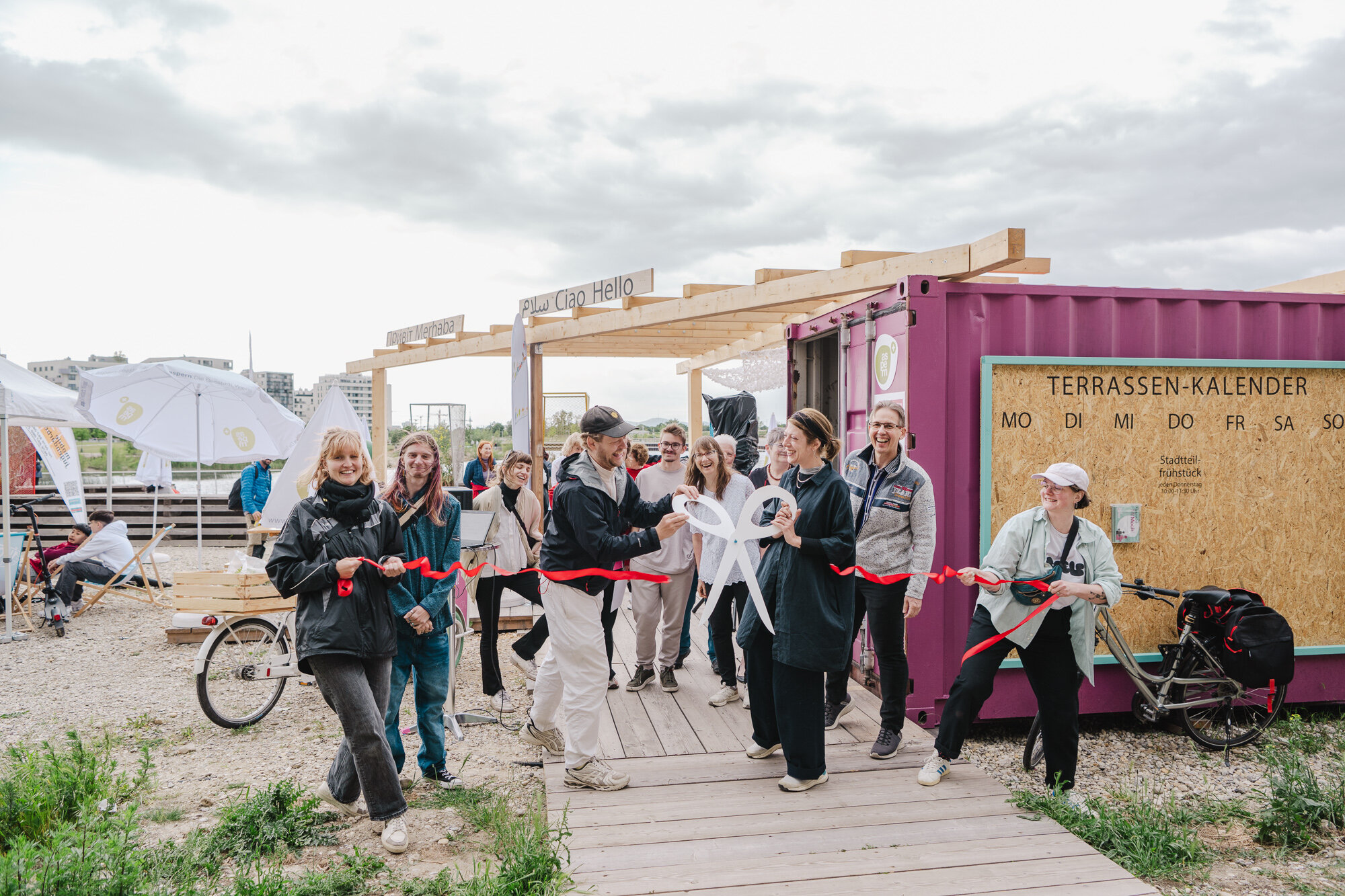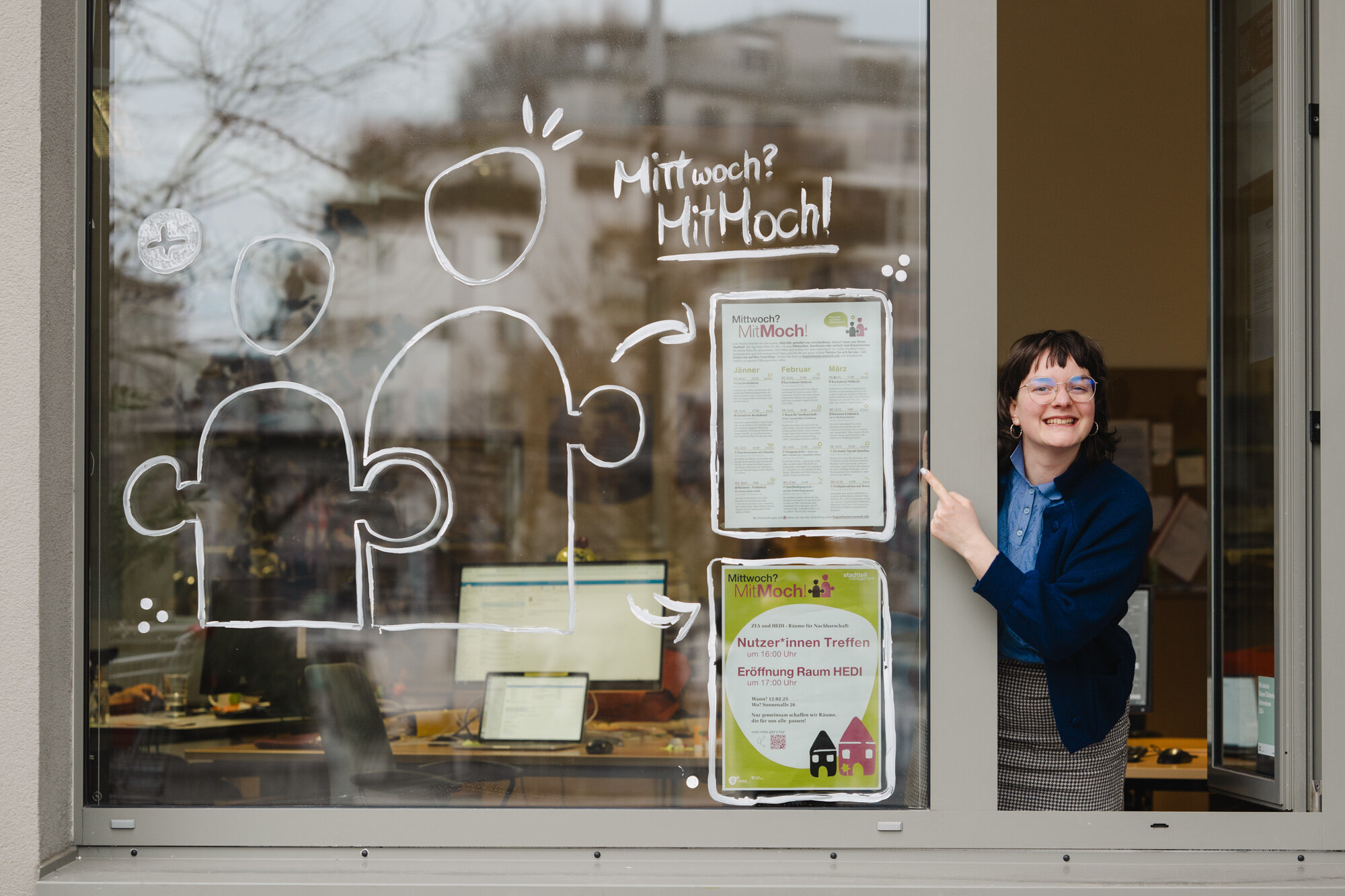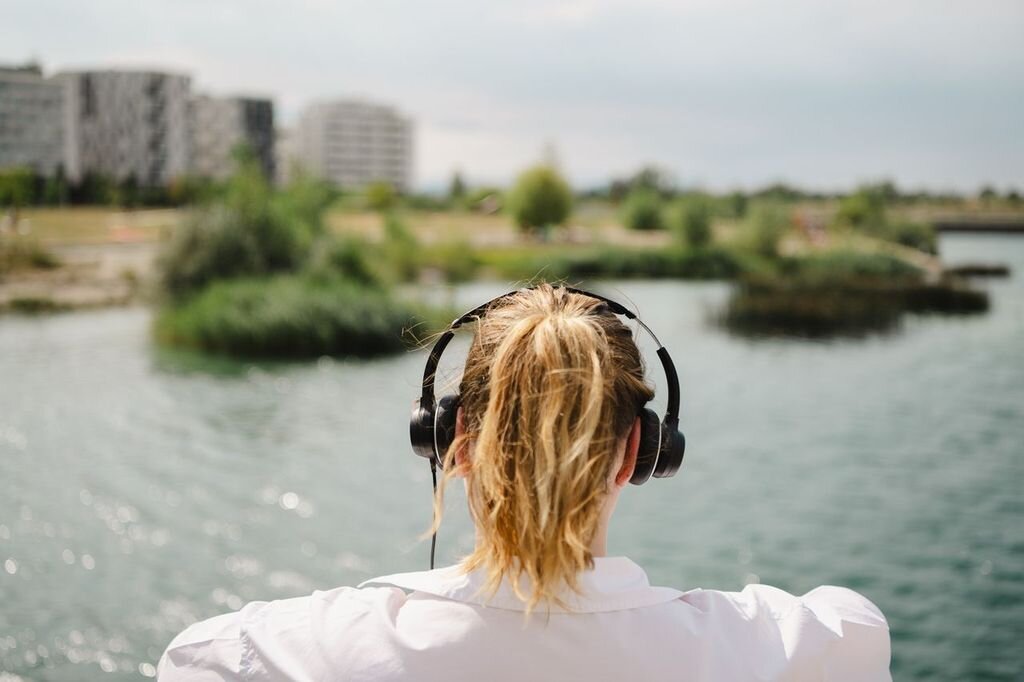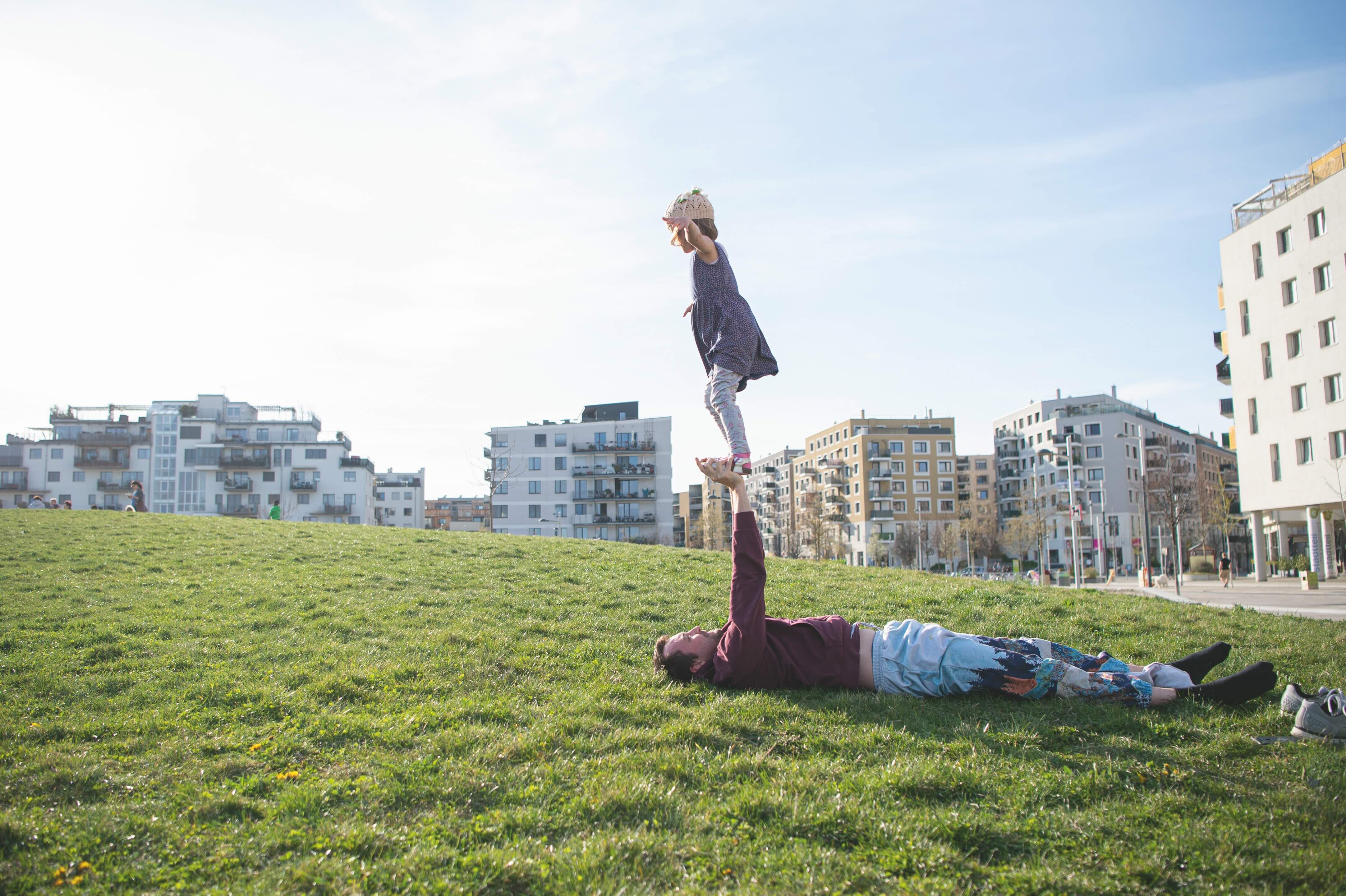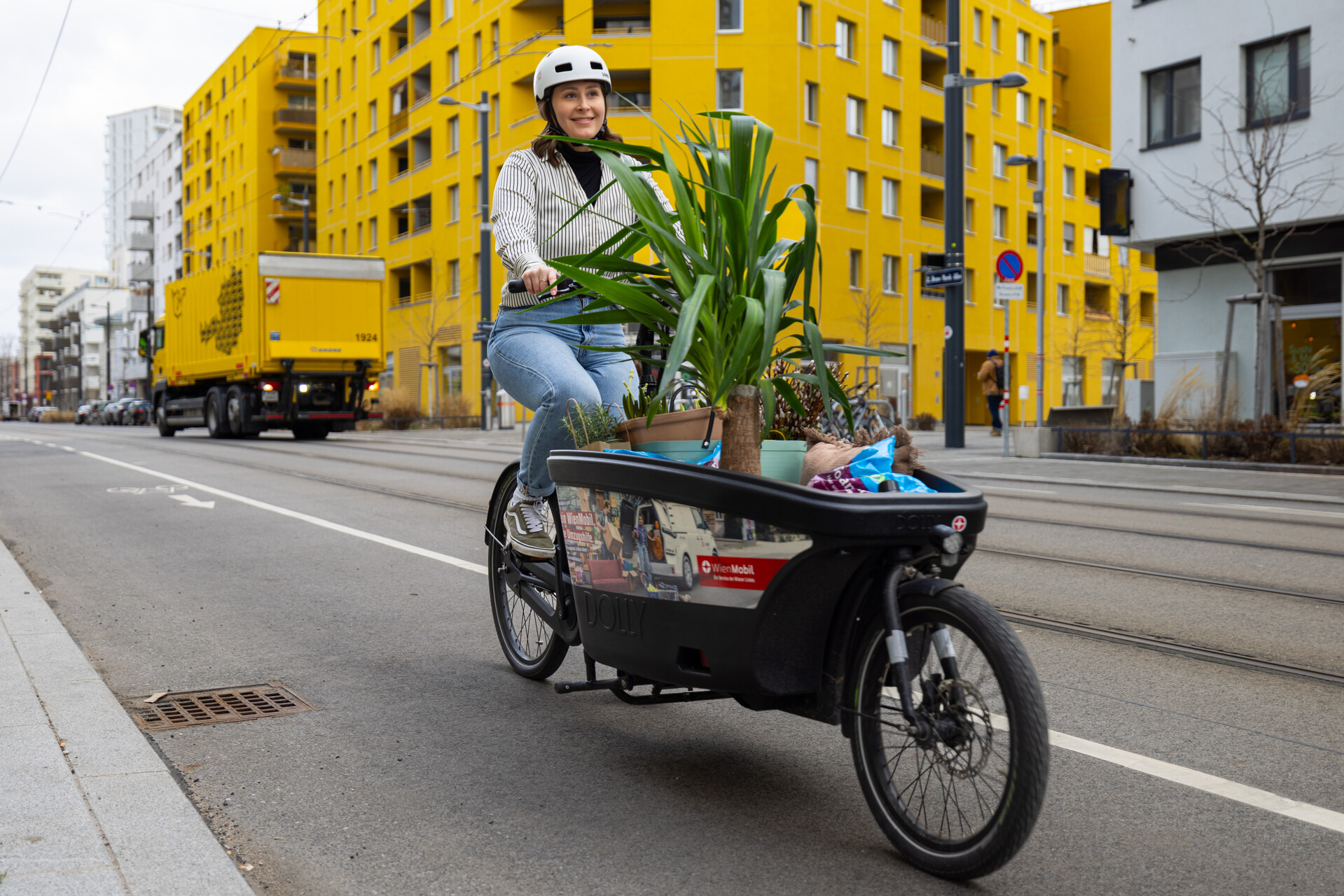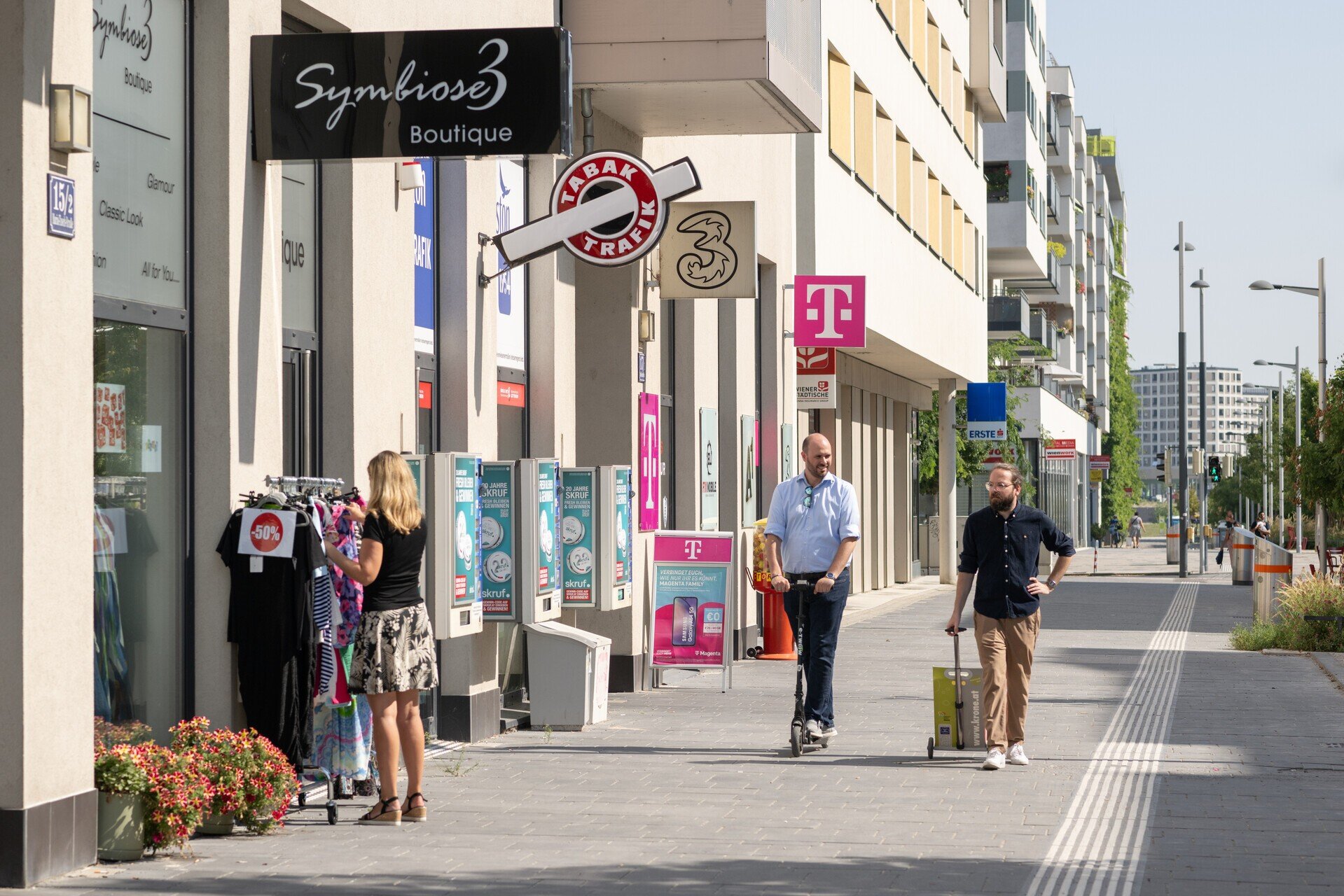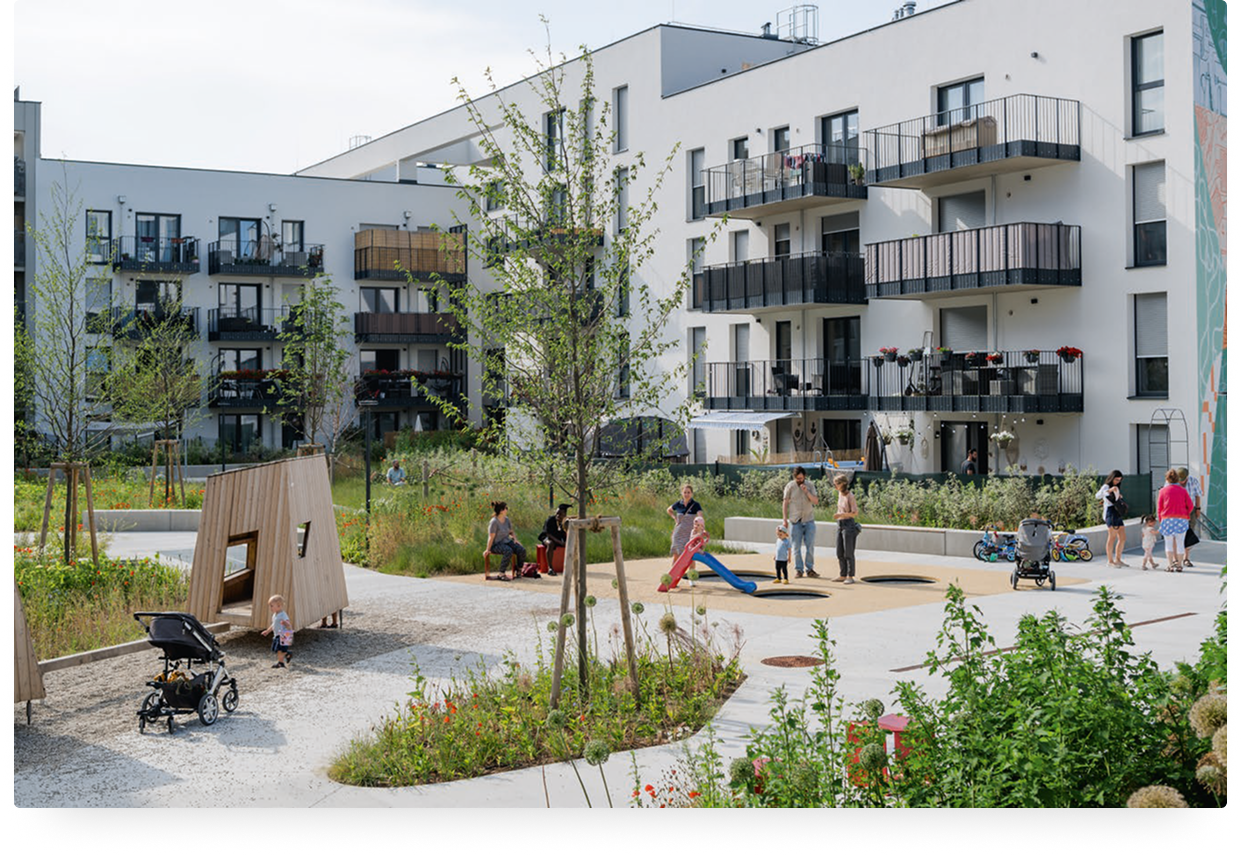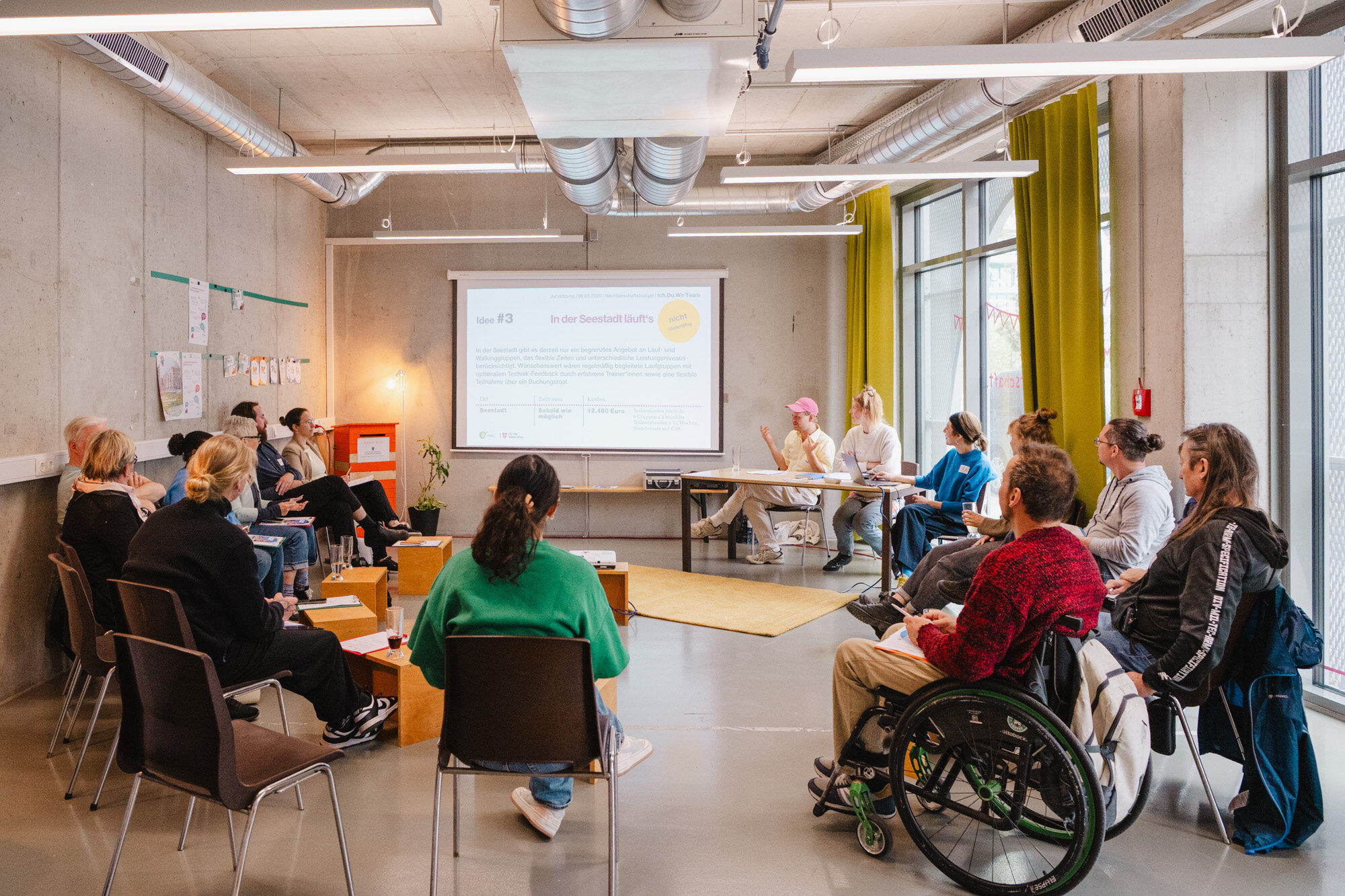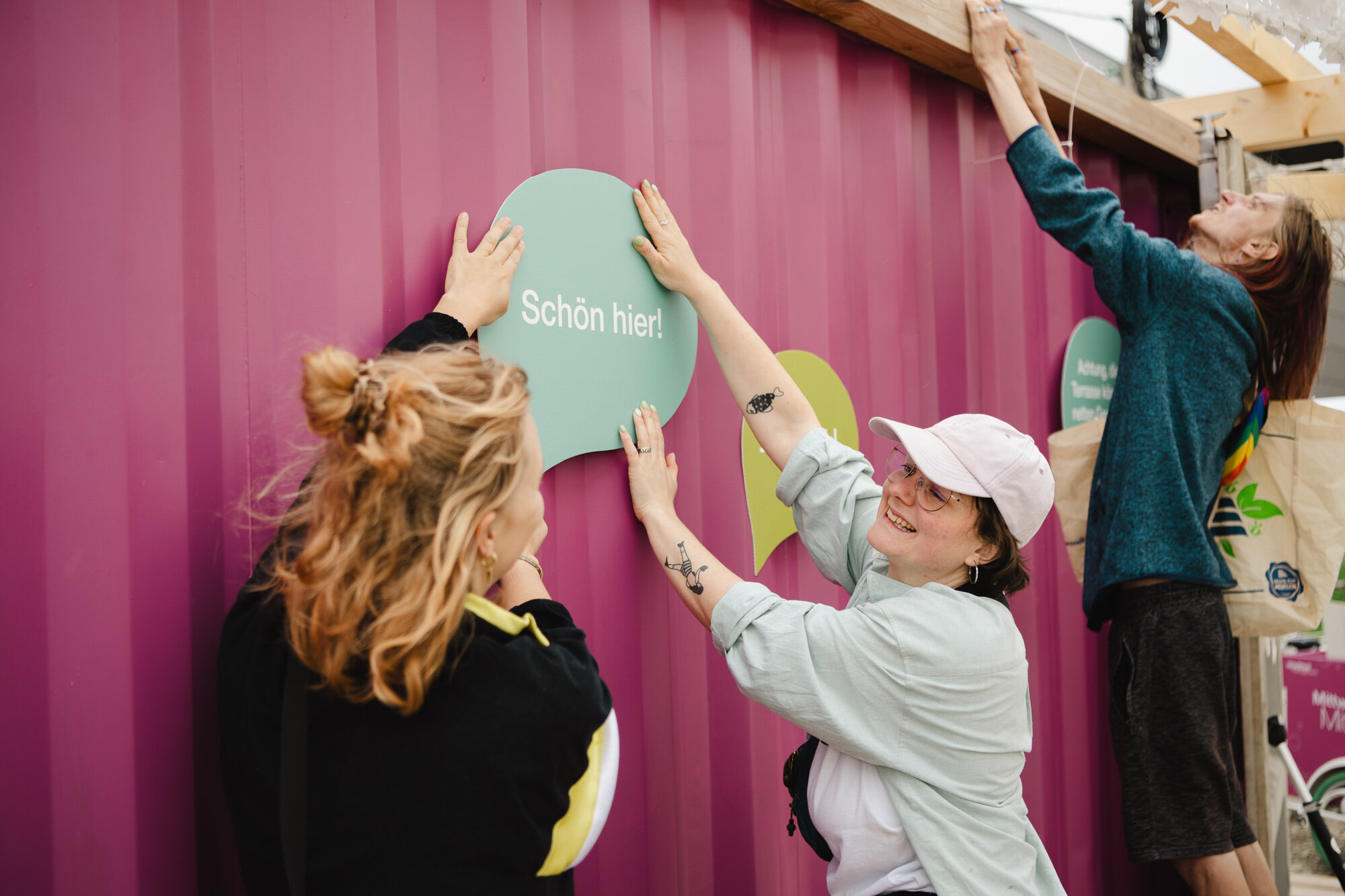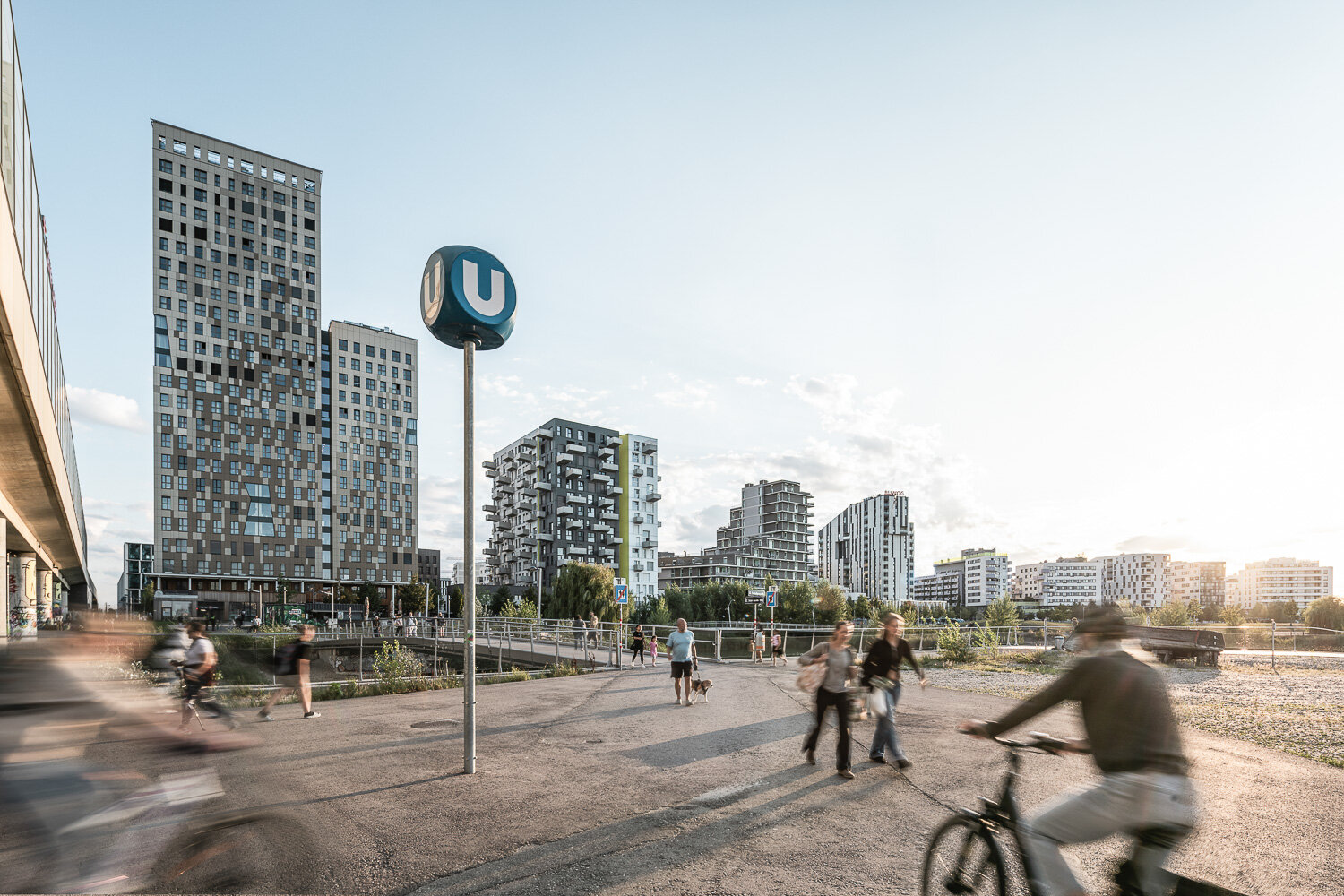
Connection to the city center
The U2 directly links Seestadt with Vienna’s city center. The journey to Rathaus takes around 25 minutes, and from Karlsplatz to Seestadt about 30 minutes. Two stations – Aspern Nord and Seestadt – serve the district. This ensures that jobs, leisure activities, and business appointments are quickly and conveniently accessible.
The U2 connects Vienna’s city center with Seestadt at frequent intervals – in around 25 minutes.
Aspern Nord: Gateway to the region
Aspern Nord station complements the underground connection with direct links to the regional rail network. Rapid and regional trains connect Seestadt with Vienna and the surrounding area. This provides commuters, businesses, and visitors with smooth access to key transport routes.
Trams and buses that connect
Seven bus lines serve Seestadt from all directions. They ensure flexible, fine-grained connectivity within the district and to the surrounding neighborhoods. Whether for school, work, or a visit to a café – the bus lines keep Seestadt moving at all times. Tram line 27 offers a direct connection from Aspern Nord via Kagraner Platz and Floridsdorf to Strebersdorf.
The bus lines in Seestadt are comfortable and practical for everyday use – with short intervals and direct connections.
On foot and by bike
Sustainability shapes everyday mobility in Seestadt. Wide sidewalks, car-free zones, and a dense network of cycle paths invite you to reach many destinations directly on foot or by bicycle. This creates a vibrant, healthy environment that encourages activity and enhances quality of life.
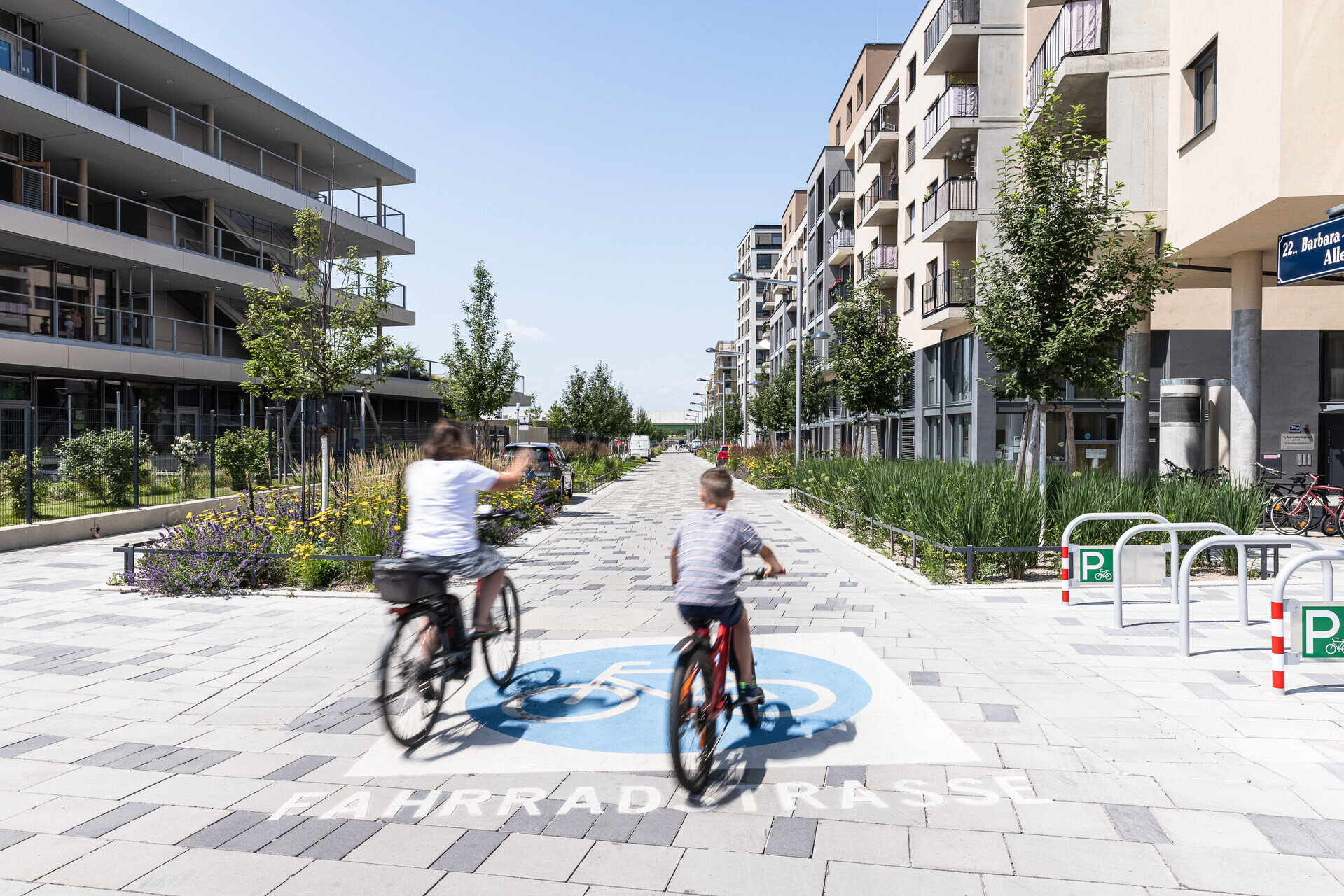
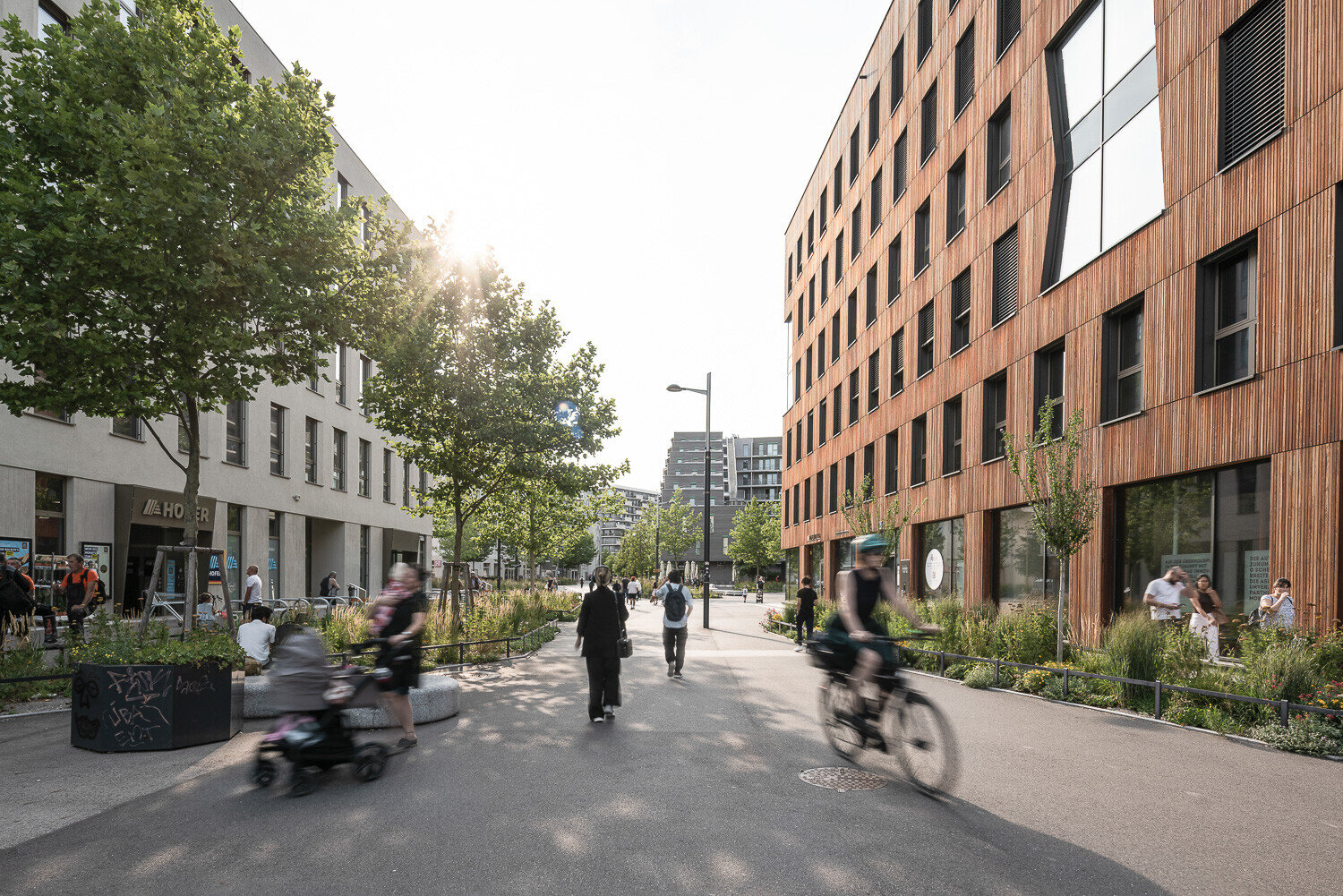
Cycling paths and spacious pedestrian zones shape the cityscape of Seestadt.
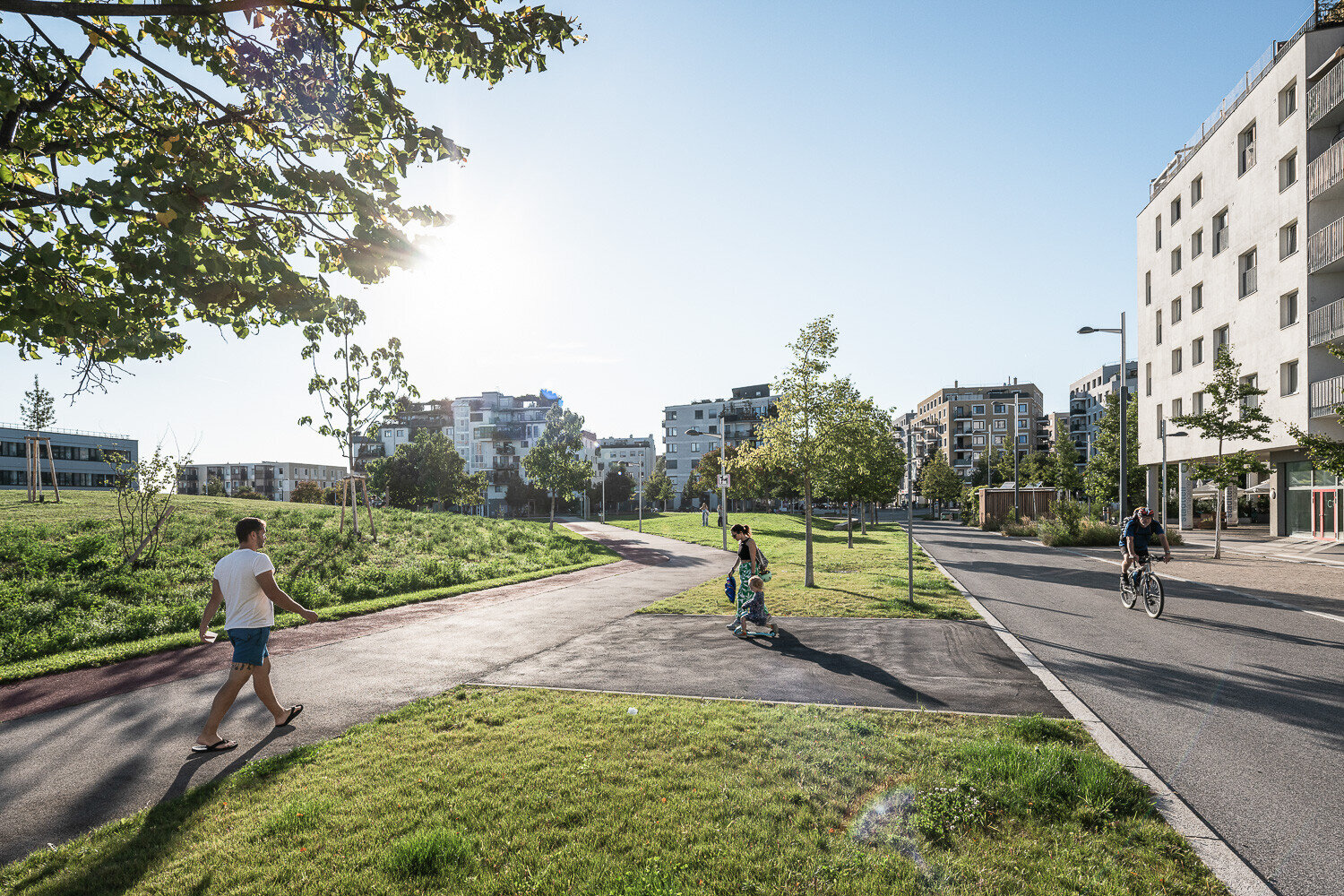
Smart car solutions
Seestadt also offers a well-thought-out concept for car traffic. Collective garages with numerous e-charging stations on the edge of residential quarters handle parking, keeping streets free for green spaces, encounters, and movement. Convenient parking makes shopping, strolling, and visits on site comfortable and stress-free. This system is complemented by car-sharing options, enabling individual trips without the need for a private vehicle. In this way, Seestadt remains vibrant and low-traffic, while residents, visitors, and businesses stay flexibly mobile.
The VHS Kulturgarage on the edge of Seestadt creates space for a low-traffic street environment.
Mobility as a locational advantage
In Seestadt, many components interlock: subway, train, tram, bus, cycling and walking paths. Around two thirds of all journeys are intended to be made by public transport, on foot, or by bike – only about one fifth by car or moped. This well-thought-out concept makes Seestadt a trailblazer in sustainable mobility.
It enhances the quality of life for residents, makes it easier for visitors to get here, and offers companies the assurance of optimal accessibility.
You can find a compact overview of public transport, cycling and walking routes, sharing options, and parking facilities here.

